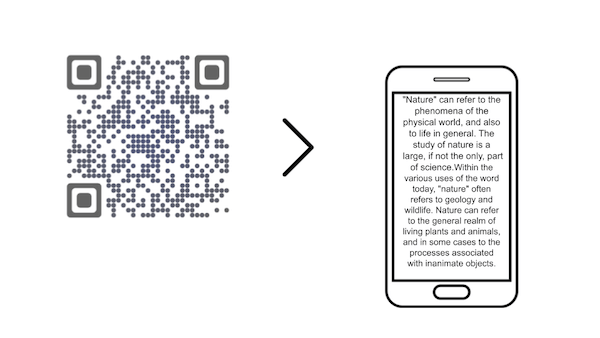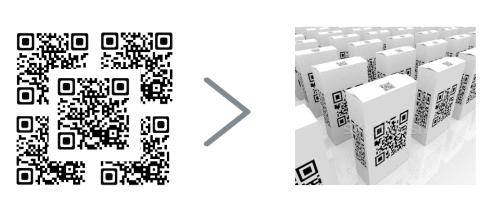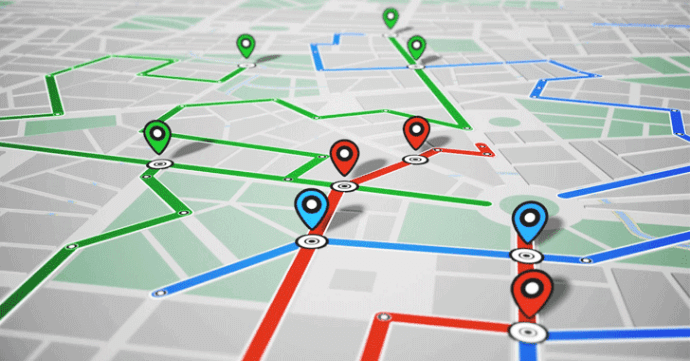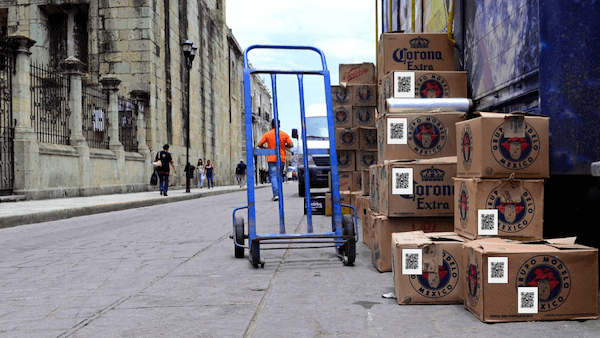You are probably a shipping and logistics company. And your services require you to manage the flow of goods.
So you try your best to ensure that the goods you handle, are transported from the point of origin to destination safely. It could be for either individual customers or for businesses. Or any such consumer.
You are looking for ways to enhance your services to cater to your customers better. And you have seen square-shaped barcodes being used for similar purposes.
These are called QR Codes and store information. They are easily scannable with a smartphone and do not need you to install any cost-intensive set-up.
From payments to marketing, they are now being used in almost every industry. So you want to explore the scope of using QR Codes for the shipping and logistics business too. And you are right.
They are of immense utility for your industry. But you might think—barcodes, just like QR Codes, store information. Why should I then go for QR Codes over barcodes?
Well, there are quite a number of reasons to do that. Keep reading to know
Related : Best QR Code Generator
A. Why choose QR Codes over barcodes
Here are four reasons to do it:
1. Information storage capacity
Just like barcodes, QR Codes store information. But they do not store just limited information. In fact, a QR Code can store up to 7,089 numeric or 2,953 alphanumeric characters.
That means you can store a lot of information in a QR Code. And besides only numbers or serial codes, it even allows you to store text, website links, and multimedia content (such as images and videos).
So you no longer need to be worried about the limited storage capacity while encoding content.
2. Ability to resist damage
While in transit, goods are subjected to a lot of wear and tear or even dirt. And that often damages the barcode labels stuck on them.
Once damaged, these labels do not scan well, right? Well, that is not the case with QR Codes.
They can easily sustain up to 30% damage and still scan perfectly well. This is because QR Codes have the property of error correction. It adds rows and columns of data to the QR Code to make it scannable even after damage.
3. Smaller size
As a shipping or logistics company, you ship a wide variety of goods. They could range from large containers to tiny microchips.

But the question is—how do you track such tiny goods? With QR Codes. Yes, in a given area, a QR Code stores much more information than a barcode.
Hence, it can be effectively used for both large and small products equally well.
4. User-friendliness
You have probably been to a Walmart and have seen the cashier scanning barcodes at the checkout.
To scan the barcode, they need a barcode scanner. Plus, they need to hold the scanner in a characteristic manner and scan the barcodes. This is because they can only be scanned from left to right. But you do not need to do it to scan a QR Code.
Yes, QR Codes can be scanned in any direction. Unlike barcodes that have unidirectional scannability, QR Codes are 306 degrees scannable.
And you do not need a handheld scanner to scan a QR Code. Your smartphone is all that you need. Simply open your phone’s camera or QR Code scanning application. And hold your phone in front of the QR Code.

A message will pop-up to show you what is encoded in the QR Code. Simple, right?
Also, QR Codes scanning is faster than that for barcodes. Hence the name—Quick Response (QR) Codes. This feature (fast scanning) is especially useful when the products or shipments to be handled are high in number.
Now you know why QR Codes are better than barcodes for your use case. Let’s now proceed to see how QR Codes can be used in shipping and logistics.
B. Use cases of QR Codes in shipping and logistics
1. To manage your inventory
QR Codes were invented back in 1994 by Denso Wave Corporation in Japan. And their purpose was inventory tracking itself. They saved a lot of time and effort as compared to the traditional methods of managing inventory.
And it continues to be one of their major use cases of QR Codes even today. Inventory managers need not be present during check-ins and check-outs all the time. QR Code labels on the goods can easily do it for you.

This makes communication between inventory managers and operators easier.
If you have this use case, you would need to create QR Codes. But you might wonder—will I have to create them one-by-one? No, that will take a lot of your time.
You can rather create QR Codes in bulk to manage your inventory. All that you need is—a bulk QR Code Generator tool.
Also see, how to create QR Codes as printable labels in bulk.
2. To track goods while in transit
As a part of your job, you need to keep an eye on goods at various stages during transit. And to do it, you do not need to regularly call the fellow operators or track the goods’ serial numbers.
QR Codes help both shipping and logistics do it easily. Once you place them on the packaging, operators can scan them at various stages of the transit, especially when integrated with last mile software.
And you can then see where your shipments are. In fact, you can also monitor details such as time and the exact GPS location of each scan.

And this feature is not helpful only for you but for your customers too. How?
Just like you, it also enables them to track where their packages are and till when will they be delivered.
3. To help make the process of delivery easier
The final destination for any shipment of a package is—the consumer. And to deliver parcels, your delivery team heads out with the packages to be delivered at various locations.
But they have to put quite much of time and effort into finding each address. You might think—how can a QR Code help the delivery team here?
We earlier discussed that QR Codes do not simply store text-based information. They can store diverse content. And Google Maps location of a location is another such thing. We call them—Google Maps QR Codes.

A Google Maps QR Code, when scanned, redirects the user to the encoded location on their phone’s maps application.
They no longer need to spend time trying to figure out directions to deliver the package. They can simply scan the QR Code on a given package. And navigate the direction to reach the destination. That simple.
And since a Google Maps QR Code is dynamic in nature, you can monitor its scanning activity too.
4. To store product or shipment details
Many a time, you also need to provide product details on the packaging. But the limited print space on the packaging does not allow you to add all of it.
It could be anything such as the origin and destination of the parcel. Or the details on how to handle and unbox the parcel. Or what is inside the package.
QR Codes help you encode all this information in a little space and add it to the material to be shipped.
In fact, QR Codes here can also help customers identify the authenticity of the product. For example—In Aug 2019, Central Drugs Standard Control Organisation (India) mandated QR Codes for drug ingredient shipments.
They said:
“Every active pharmaceutical ingredient manufactured or imported in India shall have a QR Code on its label at each level packaging. This will store data readable with a software application for tracking and tracing.”
The QR Code will have details such as brand name, manufacturer’s name, date of manufacture, and storage conditions needed.
These are some ways shipping and logistics companies can use QR Codes for various use cases. High data storage capacity, damage resistance, and user-friendliness make them better than barcodes. Hence, they are often referred to as ‘advanced level barcodes’.
But before you go ahead to creating and using them, make sure you add enough error correction to your QR Codes. You must choose the H or V level of error correction here. It will ensure smooth scanning of the QR Code even after being damaged or dirty.
Now you know everything about the utility of QR Codes in logistics and shipping companies. And the next step is to:
[cta1 caption=”Create a QR Code to make your processes better” content=”Get started with your first QR Code” buttontext=”Create QR Code now” destination=”https://scanova.io/design-qr-code-generator.html” image=”https://scanova.io/blog/wp-content/uploads/2016/12/qrcode-8.png”]Have any queries? Or do you know of a relevant use case of QR Codes that we missed? Let us know in the comments.
